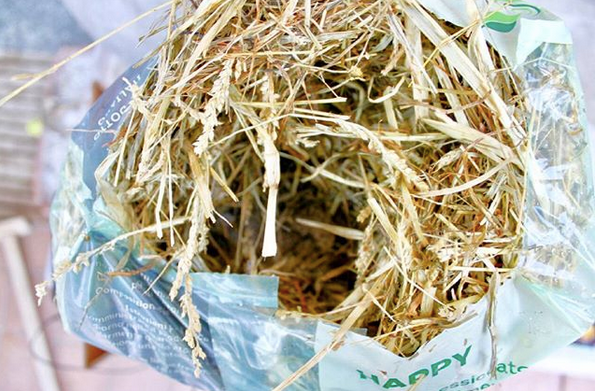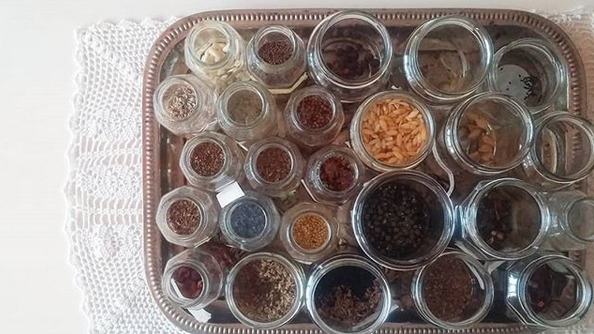 Photo credit Carmela Kia Giambrone
Photo credit Carmela Kia Giambrone
My passion for horticulture and #nature in general, was born as a child, thanks to my family, my grandfather and my father, both passionate about the vegetable #garden and cultivation. Over time it has grown with me and in recent years, thanks to my studies, it has really touched the maximum interest, especially if declined in urban areas and applied to #sustainability and downshifting.
The steps of my study were many but certainly some have left me a sign more than others:
- the discovery of the work of Mollison and Holmgren and their #Permaculture;
-the reading of two milestones in ecology as #RachelCarlson's "Silent Spring" and "The Closing Circle" by #BarryCommoner
- reading of #JuliaButterflyHill and her "everyone can make the difference"
-the reading of the Boland sisters' booklet "The garden of the old ladies"
but still
-the work of M.#Fukuoka, microbiologist who in 1937 developed synergistic agriculture
- the work of #EmiliaHazelip, French agronomist, who at the end of the '70s adapted the work of Fukuoka's "The straw revolution" to European climates, turning in fact synergistic agriculture into concepts and techniques within everyone's reach
 Photo credit Carmela Kia Giambrone
Photo credit Carmela Kia Giambrone
 Photo credit Carmela Kia Giambrone
Photo credit Carmela Kia Giambrone
So I started experimenting with everything that I could experience in the small spaces I had available: my experience was born of errors, tests and proofs of domestic #composting and natural urban horticulture, grown day after day, step by step step.
The 4 principles of synergistic agriculture
The 4 principles of this type of #agriculture are very simple and in symbiosis with the naturalness of the harmonic cultivation activity. This method of cultivation exploits, in fact, the synergy that nature possesses in an innate way:
No land tillage
the earth feeds with the biomass (and #compost)
No synthetic treatment
No compact
So I quickly realized that, with the necessary precautions, this agricultural technique could be applied to small urban spaces, like a #urbangarden or a vegetable garden on the balcony in the city.
This is how I experienced the preparation of pots as if they were pallets: naturally they will not be the same as an open field but trust me, they will bear fruit.
 Photo credit Carmela Kia Giambrone
Photo credit Carmela Kia Giambrone
#Mulching then is a very important practice: covering the ground with straw or small pieces of cardboard and then straw, allows you to keep off the growth of spontaneous and "infesting" (even if I do not particularly love this term) and also serves not to evaporate the #water from the pots themselves, especially in #summer and late #spring. In #winter it protects the #roots from frost.
How to build a synergistic vegetable #garden in the #city
 Photo credit Carmela Kia Giambrone
Photo credit Carmela Kia Giambrone
Having a small space in the city can be all you really need to make your own urban garden, a city-sized vegetable garden.
7 tips to create the perfect "city-sized" urban garden on the balcony
Follow these simple 7 #tips and easily create and have #fun, your perfect urban vegetable #garden.
1.Choose what to grow depending on the season and your exposure: if it is half-shade many of the listed species will be impossible to grow, so plan well with calm and accuracy.
2.Choose what to grow according to your tastes: it is useless to grow strawberries if you are allergic or if you do not eat them.
 Photo credit Carmela Kia Giambrone
Photo credit Carmela Kia Giambrone
3.Opt for fast-growing varieties and small species, will allow you to have greater biodiversity and satisfaction: varieties that can be harvested within a short time are able to give food quickly. Some of the fastest growing vegetables are, for example, radishes, lettuces, cabbage, beets, beans, string beans, peas and broccoli.
4.Cotivate with imagination using every useful space and every useful moment: some examples? experiment the kokedama,, the garden table or why not, the guerrilla gardening preparing your seed bombs. from you.
 Photo credit Carmela Kia Giambrone
Photo credit Carmela Kia Giambrone
 Photo credit Carmela Kia Giambrone
Photo credit Carmela Kia Giambrone
Arm yourself with a little patience and the results will come :)
Prepare to cope with adversity by playing in advance (pay attention to the attacks of phyto-phages and fungi and also attention to heavy metals in your urban garden) but do not use synthetic substances.
Choose seeds of good quality, activate them by placing them the night before sowing to soak in water and prefer soil and natural compost (or even prepare cuttings and margotte with your own hands)
The ABC of the garden on the balcony
Sowing and transplanting: all that is good to know
 Photo credit Carmela Kia Giambrone
Photo credit Carmela Kia Giambrone
 Photo credit Carmela Kia Giambrone
Photo credit Carmela Kia Giambrone
...continue reading my post on my Wordpress #blog
https://www.equoecoevegan.it/i-7-consigli-per-creare-il-perfetto-orto-sul-balcone-a-misura-di-citta/
All so close to my heart!
Given that our farms are encroaching on many of our urban places in Australia - especially around Sydney, the line between farmland and urban environment is blurring.
You've given us all some really terrific ideas to keep the urban gardener inspired, productive and having a great time here on Earth!
I don't know why it's taken me so long to go through my followers and find you, but here we are - I'm following you now!
One promise you have to make - PLEASE post more regularly! We need more strong contributors here and I really enjoy your writing.
Take care.
Nick
Downvoting a post can decrease pending rewards and make it less visible. Common reasons:
Submit
Hi Nick, thank you so much for your nice words! :) I'm very happy to ear so many compliment and I will try, i promise :) see you soon and happy day!
Downvoting a post can decrease pending rewards and make it less visible. Common reasons:
Submit
No worries! Keep writing and sharing your work with us all.
Nick
Downvoting a post can decrease pending rewards and make it less visible. Common reasons:
Submit